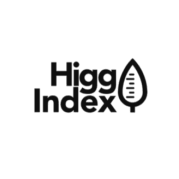Understanding the Higg Brand and Retail Module: A guide to sustainable measurement
The fashion industry faces growing pressure to become more sustainable. Consumers are increasingly demanding transparency and accountability from brands, and regulations are pushing for reduced environmental and social impacts. In response, the Higg Brand and Retail Module (BRM) have emerged as a leading tool for brands and retailers to measure and improve their sustainability performance.
What is the Higg BRM?
Developed by the Sustainable Apparel Coalition (SAC), the Higg BRM is a standardized assessment tool that helps companies evaluate their environmental, social, and governance (ESG) impacts across their entire value chain. This includes everything from raw material sourcing and production to product transportation, retail operations, and end-of-life management.
The BRM is designed to be scalable and industry-specific, making it suitable for businesses of all sizes within the apparel, footwear, and textile industry. It provides a holistic framework that enables companies to:
- Assess their sustainability performance against industry-relevant ESG criteria.
- Benchmark their performance against peers for comparative analysis.
- Identify areas for improvement and set sustainability goals.
- Track progress over time and demonstrate their commitment to sustainability to stakeholders.
Key features of the Higg BRM
Comprehensive Scope: The BRM covers a wide range of environmental and social impact areas, including:
- Climate change
- Water use
- Waste generation
- Chemical management
- Labor practices
- Worker well-being
- Ethics and governance
Standardized Scoring System: The BRM uses a standardized scoring system to assess performance in each area, allowing for consistent comparisons between companies.

Scalability: The BRM is designed to be adaptable to companies of all sizes and levels of sustainability maturity.
Online Platform: The Higg sustainability platform facilitates data entry, analysis, and reporting, making the process user-friendly and efficient.
Verification Option: Independent verification of BRM self-assessments can further enhance transparency and credibility.
Benefits of using the Higg BRM
- Improved Sustainability Performance:By identifying areas for improvement, companies can set goals and implement strategies to reduce their environmental and social impacts.
- Enhanced Transparency and Communication:The BRM allows companies to communicate their sustainability efforts to stakeholders with clear and standardized data.
- Benchmarking and Competitive Advantage:Companies can benchmark their performance against peers and identify opportunities for differentiation.
- Risk Management:By proactively addressing sustainability issues, companies can mitigate potential risks associated with non-compliance or negative public perception.
- Supply Chain Collaboration:The BRM can be used to encourage collaboration between brands and suppliers to improve sustainability performance across the entire value chain.
Getting started with the Higg BRM
Companies interested in using the Higg BRM can register for free on the Higg Co. platform. The platform provides access to resources, including:
- User guides and training materials
- BRM self-assessment tool
- Benchmarking data
- Support from the SAC community
While using the BRM requires some investment in terms of time and resources, the potential benefits for companies committed to sustainability are significant. By providing a comprehensive and standardized framework for measurement and improvement, the Higg BRM can play a crucial role in driving a more sustainable future for the fashion industry.
